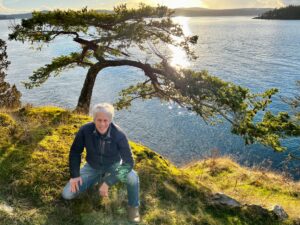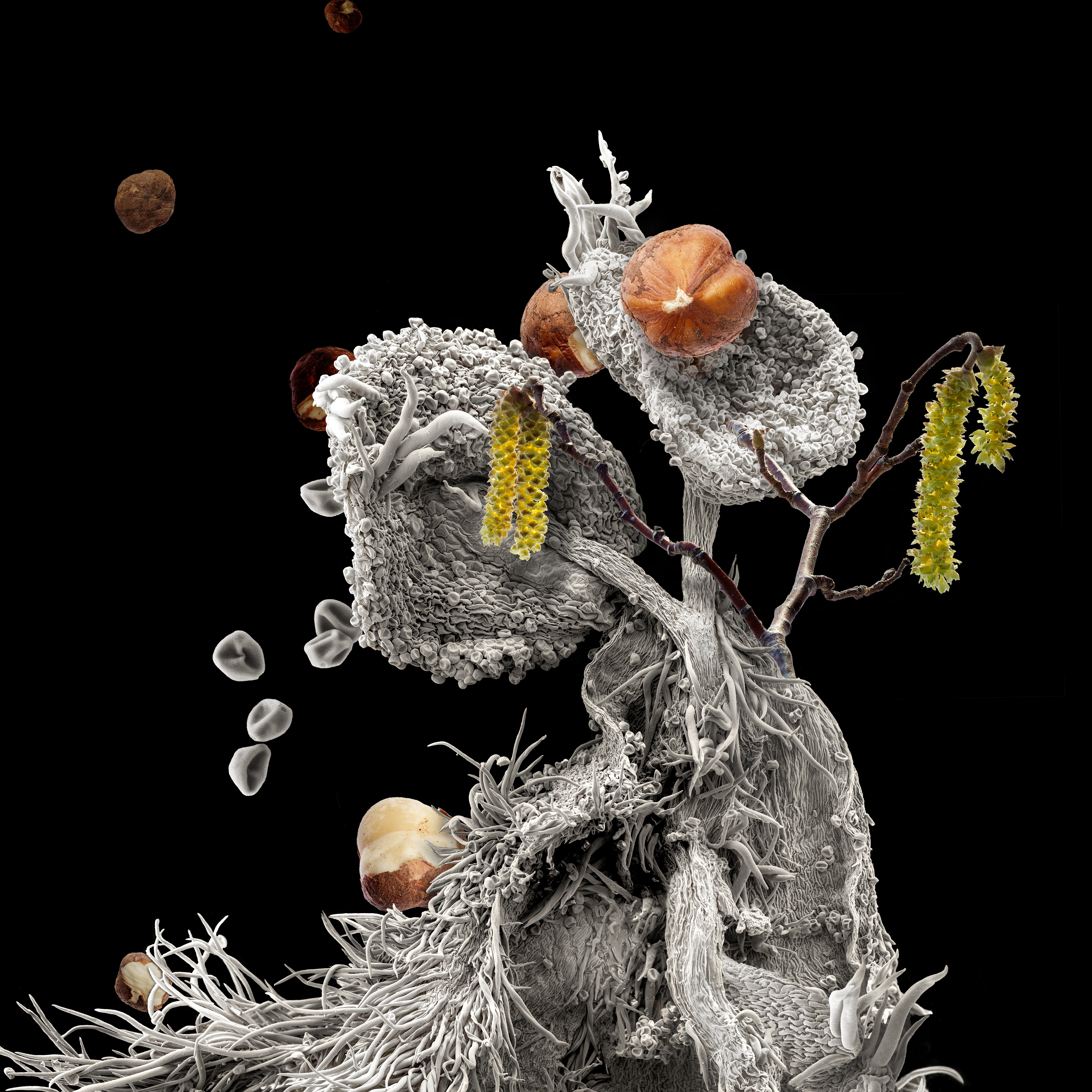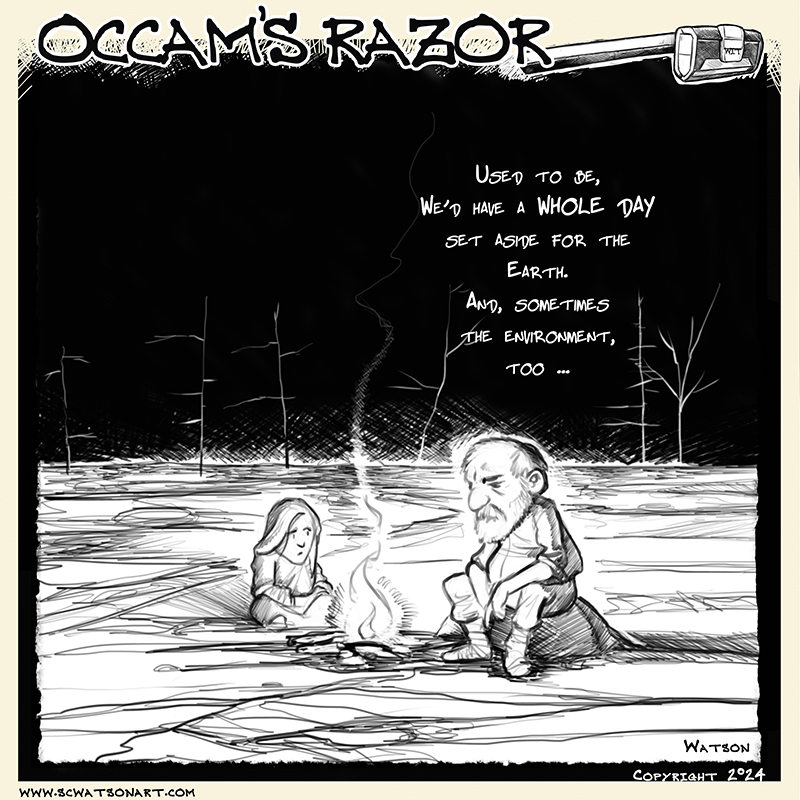||| EARTHRISE BY JAY KIMBALL |||
Looking at Robert Dash’s photographs, we can see… each image is a poem. An awe-inspiring visual invitation to slow down and deepen our connection with nature.
“If the doors of perception were cleansed, everything would appear to man as it is, infinite.” ~ William Blake
Reading Dash’s book, On an Acre Shy of Eternity, you see that that shy acre, home to Dash and his wife, artist Ranna McNeil, is their muse – a quiet mossy hillside, overlooking the beautiful Salish Sea, that calls to them each and every day.

Since publishing his book in 2017, Dash’s photographic work has attracted a global audience thanks to numerous awards, exhibitions, residencies, articles, and, most recently, the National Geographic Storytellers Summit, a four-day gathering of National Geographic photographers, editors, writers, and staff.
A Conversation Overlooking the Salish Sea
Before leaving for that summit, Dash met with me for a wide-ranging conversation, catalyzed by my asking him to pick one of his photographs that embody key climate actions that can help the planet.
We met on a day that had started northwest winter gloomy but suddenly turned luminous and springlike in the afternoon. Sitting in folding camp chairs, surrounded by windswept Douglas fir trees clinging tenaciously to the steeply sloping cliff, we took in the expansive view of Spring Passage to the southwest. Sunlight reflecting off the pristine waters dazzled. Numerous waterfowl bobbed on the gentle tidal flow. A single sea lion occasionally surfaced, spy-hopping for a brief look at us as it took a puff or two of air.
Dash’s chosen photograph, pictured below, is a photo montage of images, at various magnifications, from the hazelnut tree – Corylus avellana. The elements include:
- brown hazelnuts;
- the yellow catkin anther, filled with hundreds of tiny flowers, which typically open in January;
- and the dominant image – scanning electron micrographs (in gray) of catkin flowers (about the width of a pinhead, 200x magnification) and their pollen (540x magnification).

Beyond the “crazy fascinating design,” Dash said, “hazelnut trees have a remarkable set of benefits,” that are good for the planet. “Hazelnut trees provide edible food, produce oil almost of the quality of olive oil, and offer massive benefits for soil health and for capturing carbon. They are carbon capture factories.”
And because it is a perennial, they do this naturally, year after year. “So much of our agriculture is annual. Farmers need to start over every year. All of the energy, fertilizers, sowing of seed, is tremendously fossil fuel dependent.”
Dash points out that hazelnut trees are essential to agroforestry and silvopasture – the mutually beneficial integration of trees, forage, and grazing domesticated animals. He says, “these are important ways to add more resilience, diversity, and sustainability to producing food.” Forward-thinking fruit and nut farmers “are shifting from mono-cropping perennials to intermixing rows of trees with pollinator crops.”
Connecting the dots between farming and care for the planet, Dash observes, “If you are interested in nature conservation, you have to be interested in agriculture and how it’s done, and how it could be done better.”
Small is Beautiful
In our often mind-numbing nanosecond culture, Dash’s images ground us in a more contemplative world where small is beautiful. Small is immense, miraculous, and reassuring in its power to move us.
Beyond talk of hazelnut trees, the conversation followed an interdepending golden thread, through a diverse set of topics, including perennial trees with edible nutritional leaves, perennial wheat, prairie strips, soil carbon cowboys, San Juan Islands Agricultural Summit, and Paul Hawken’s regeneration project. For more on all that, please take a look at the extensive notes below.
“Over all these years, nature has been my profound solace, inspiration, and teacher.” ~ Robert Dash
Earthrise: A Climate Action Journal
This climate action journal offers information and actions we can take together, locally and globally, as we care for this precious Earth.
“The best way to heal a living system, is to connect it with more parts of itself.” ~ Margaret Wheatley
If you like what you read here, pass it forward to a few friends and ask them to do the same. Like a pebble tossed in a pond, the rings emanate outward, reflecting and growing exponentially. “Going exponential” is what it will take to reverse the climate extremes that are accelerating around us.
Thank you…
• Get an alert when there’s a new Earthrise post: Subscribe
• Previous Earthrise posts: First Light
Notes
The hidden beauty of the plants that feed the world
How to protect our food from a crazy climate? Consider the hazelnut.
How are hazelnut and soybean different?
What are the most eco-friendly nuts?
The giving tree: Agroforests can heal food systems and fight climate change
Perennial trees with nutritious edible leaves
San Juan Islands Agricultural summit will feature workshops about agroforestry
Converting a Pasture to a Silvopasture in the Pacific Northwest
Food systems account for more than one-third of global greenhouse gas emissions
Paul Hawken’s regeneration project. This is an amazing interactive website.








Thank you Jay for this thought-provoking discussion of Bob’s art, which is really a window to a worldview that gives me hope.
Jay,
Thank-you for featuring Robert Dash’s work!
His visual art is extraordinary!
One might say that his photography has a remarkable depth of field that profoundly connects us to this amazing planet -our spaceship Earth.
Also, I love Bob’s poems in his book On an Acre Shy of Eternity.
Bob visually ties the microcosmos of living beings to the macrocosmos we inhabit to the greater cosmos of all that exists.
A beautiful and different view of the wonderful hazelnut tree. We implore all to utilize nut trees as the foundation for permaculture, whether it’s your yard or farm.
Thanks Jeff Zarnowski. I see you are an Orchardist at https://znutty.com/
What are your thoughts on the best hazelnut varieties for the pacific northwest? I understand that some thought must go into ensuring pollination. I have seen suggestions about placing three pollinizer varieties (early, mid, and late) in an orchard so pollen is available throughout the extended period of time during which female flowers appear. What are your thoughts on that?
HI Jay, You are correct on pollination thoughts. Dr. Thomas Molnar of Rutgers University describes having a wide period of pollen release for “pollination insurance”. Female flowers will patiently wait for pollen for over six weeks. Hazelnuts are wind pollinated so the wind needs to be coming from an actively shedding male catkin. Releases from Oregon State University are all wonderful coming from breeding work under the auspices of Dr. Shawn Mehlenbacher. When ordering trees, the main thing to know you must order no less than two different cultivars that have different S-alleles. Therefore, when selecting trees, make sure each cultivar has different alleles and different pollination periods. Most nurseries will post the allele information with the plant description that is provided by OSU. However, the latest release called “Polly-O” looks to be superior. We cannot ship trees to the west coast due to Eastern Filbert Blight being endemic to our native Corylus americana and hybrids.
Thanks for the helpful information, Jeff. For those looking to learn more about Oregon State University (OSU) work on hazelnut cultivation, see: “Growing Hazelnuts in the Pacific Northwest: Pollination and Nut Development” at: https://catalog.extension.oregonstate.edu/em9074/html
Dash is a humble visionary!